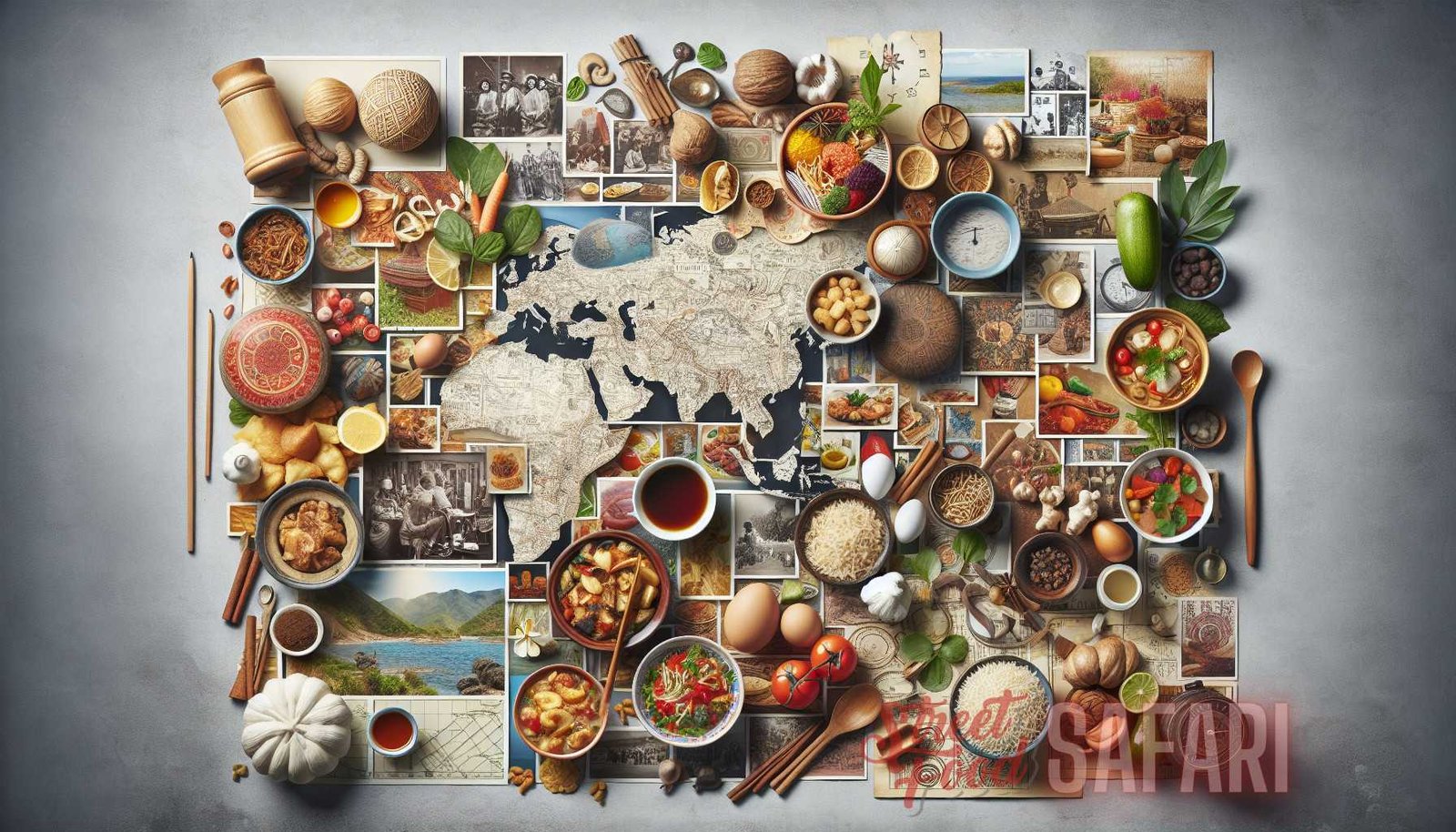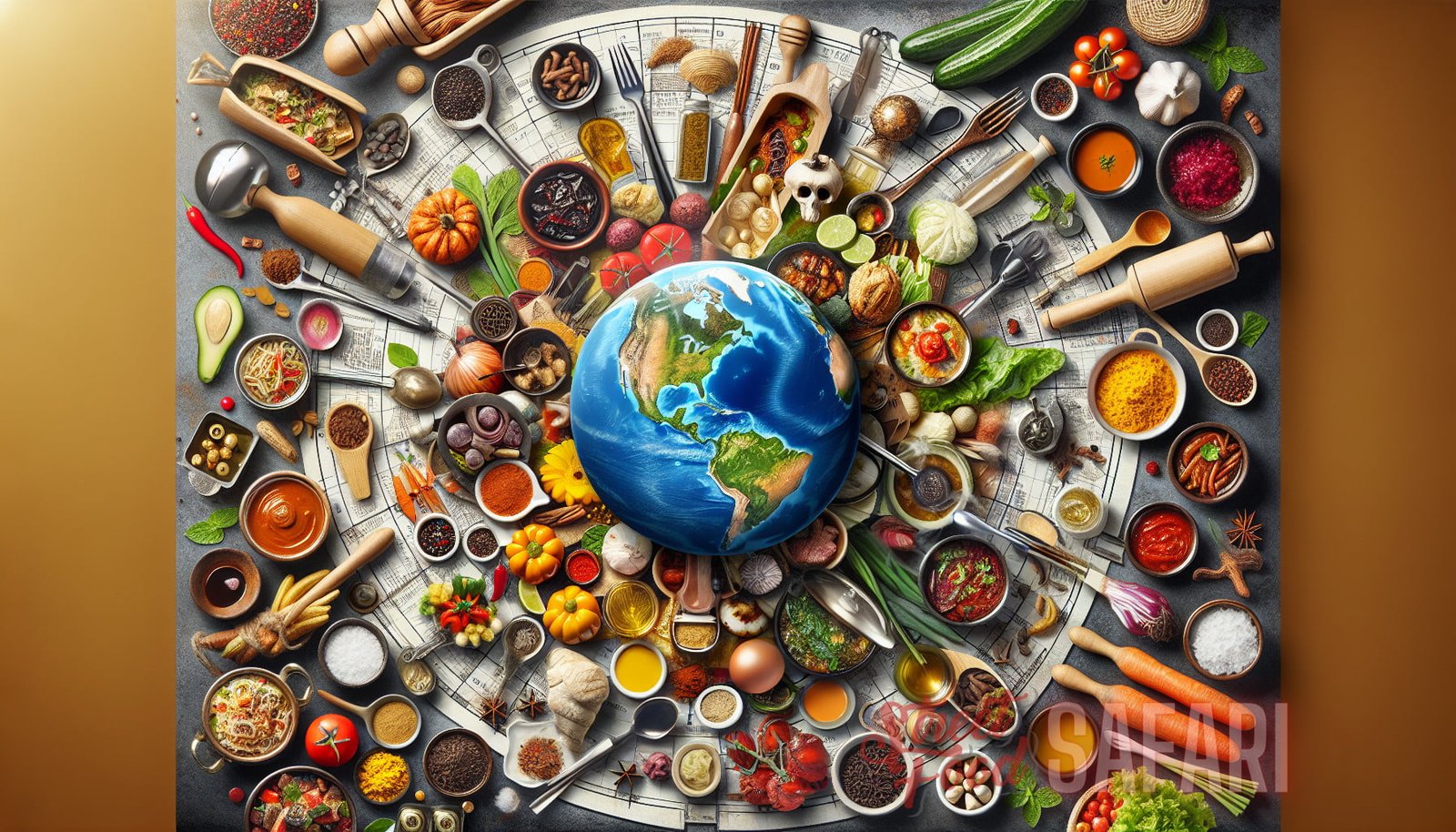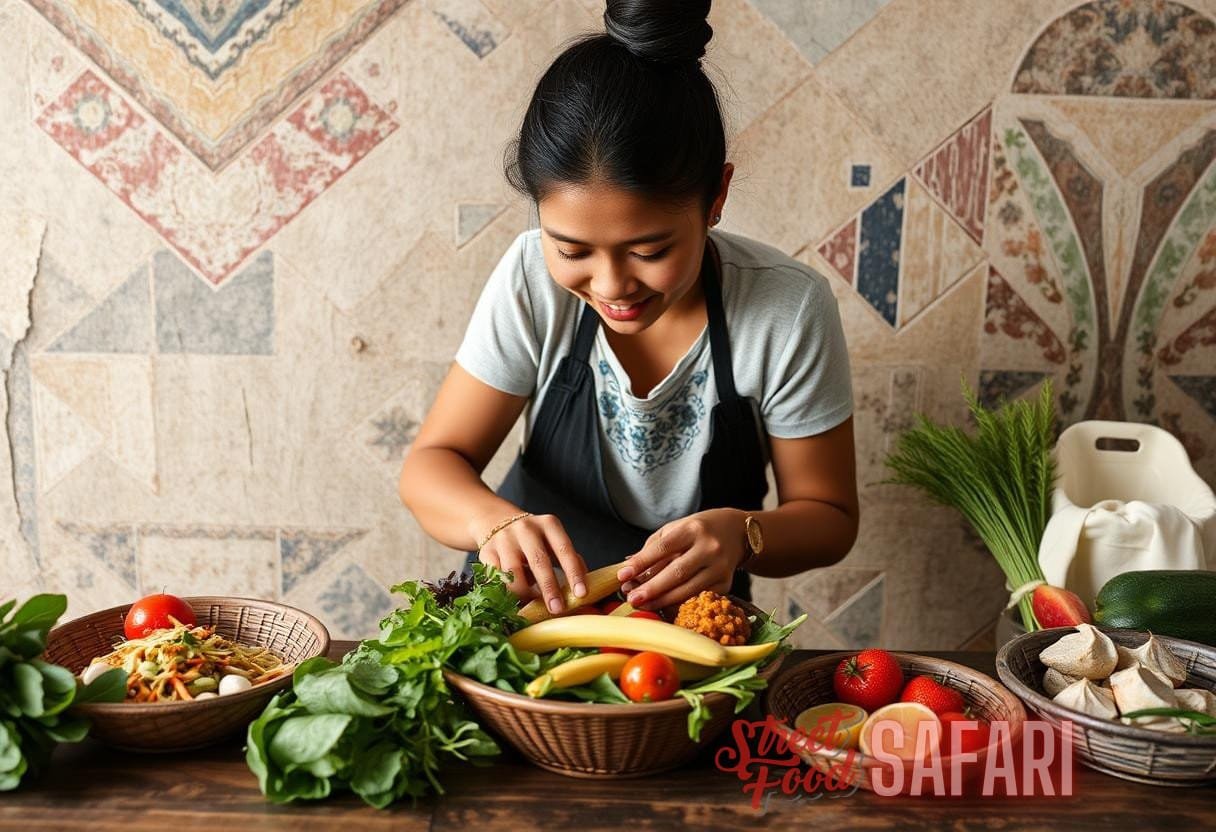Introduction
Traveling is not just about visiting beautiful places and seeing famous landmarks; it is also an opportunity to explore different cultures and experience their unique cuisines. Each country has its own distinctive flavors, ingredients, and cooking techniques that showcase its cultural heritage. Exploring cultural cuisines while traveling allows you to uncover the unforgettable tastes of the world and broaden your culinary horizons. In this article, we will delve into the fascinating world of cultural cuisines and discover the rich tapestry of flavors that await you on your next journey.
The Significance of Cultural Cuisines
Cultural cuisines are an essential aspect of a country’s identity and heritage. They reflect the history, traditions, and values of a particular culture. Every ingredient, cooking method, and dish tells a story and carries a significant cultural meaning. Exploring cultural cuisines not only exposes you to new and exciting flavors but also allows you to gain a deeper understanding of the people and their way of life.
Unveiling Hidden Gems: Authentic Culinary Experiences
When traveling, it is easy to get caught up in the tourist traps and popular restaurants that cater to international tastes. However, if you truly want to experience a country’s cultural cuisine, veer off the beaten path and seek out authentic culinary experiences. These hidden gems can be found in local markets, street food stalls, and family-run restaurants. By venturing into these lesser-known establishments, you can savor traditional dishes prepared with age-old recipes and techniques. Not only will these authentic culinary experiences tantalize your taste buds, but they will also provide you with a deeper connection to the local culture.
The Thrill of Street Food: Unveiling the Culinary Delights
One of the most exciting ways to explore cultural cuisines while traveling is through street food. Street food is the epitome of local cuisine, offering a delicious array of flavors and textures. Each country has its own street food specialties, from tacos in Mexico to banh mi sandwiches in Vietnam. These culinary delights are often inexpensive, making them accessible to travelers on a budget. As you wander through the streets of a new city, keep an eye out for food carts and stalls selling local street food. Indulge in these mouthwatering treats and allow your senses to be overwhelmed by the flavors, aromas, and vibrant atmosphere of street food culture.
Cultural Cuisines Around the World
Now, let’s embark on a culinary journey around the world and explore the cultural cuisines of different countries. From Asia to Europe, each region has its own unique flavors and culinary traditions that are worth discovering.
Asia
Asia is a treasure trove of culinary delights, with each country boasting its own distinctive cuisine. Here are a few highlights of Asian cultural cuisines:
- Chinese Cuisine: Chinese cuisine is renowned for its wide variety of flavors and cooking techniques. From dim sum to Peking duck, Chinese cuisine offers a diverse range of dishes that showcase the country’s rich culinary heritage.
- Japanese Cuisine: Japanese cuisine is revered for its elegance and attention to detail. Sushi, tempura, and ramen are just a few examples of the delicious dishes that can be found in Japan.
- Thai Cuisine: Thai cuisine is famous for its bold flavors and vibrant colors. From spicy curries to tangy salads, Thai food is a harmonious blend of sweet, sour, spicy, and salty flavors.
Europe
Europe is home to a wide range of culinary traditions that have shaped the continent’s cultural cuisines. Here are a few examples:
- Italian Cuisine: Italian cuisine is loved around the world for its simplicity and use of fresh ingredients. Pasta, pizza, and gelato are just a taste of what this Mediterranean gem has to offer.
- French Cuisine: French cuisine is considered one of the finest in the world. From delicate pastries to rich sauces, no other cuisine can compare to the artistry and elegance of French cooking.
- Spanish Cuisine: Spanish cuisine is a celebration of bold flavors and hearty dishes. Tapas, paella, and churros are just a few examples of the delicious dishes that can be found in Spain.
An article available at https://streetfoodsafari.website/travel-tips/unveiling-hidden-gems-authentic-culinary-experiences-and-food-safety-abroad-the-ultimate-article-for-travel-tips/ shares valuable insights on discovering hidden gems and authentic culinary experiences while traveling. It provides tips on finding local eateries, understanding food safety abroad, and immersing yourself in the local food culture.
Middle East
The Middle Eastern cuisine is a tapestry of flavors and spices that have been passed down through generations. Here are a few highlights:
- Lebanese Cuisine: Lebanese cuisine is known for its fresh ingredients and aromatic flavors. From hummus to falafel, Lebanese dishes are enjoyed all over the world.
- Moroccan Cuisine: Moroccan cuisine is a fusion of flavors from North Africa and the Mediterranean. Tagines, couscous, and mint tea are just a glimpse into the rich culinary traditions of Morocco.
- Israeli Cuisine: Israeli cuisine is a diverse blend of flavors influenced by Jewish, Mediterranean, and Middle Eastern traditions. Shakshuka, falafel, and sabich are some of the iconic dishes in Israeli cuisine.
Uncovering the Cultural Influences on Cuisines

Cultural cuisines are often shaped by a variety of factors, including geographical location, historical events, and cultural exchanges. Let’s delve deeper into the influences that shape the culinary landscape of each region.
Geographical Influences
Geographical location plays a significant role in shaping a country’s cuisine. The availability of local ingredients and climate conditions influence the flavors, types of dishes, and cooking techniques used. For example:
- In countries with a coastline, seafood often takes center stage in their culinary traditions.
- Countries with fertile agricultural land are known for their fresh produce and farm-to-table cooking.
- Mountainous regions often have hearty and warming dishes, as they require calorie-dense meals to withstand harsh weather conditions.
Historical Influences
Historical events have also left a lasting impact on cultural cuisines. Colonialism, migration, and trade routes have resulted in the exchange of culinary ideas, ingredients, and cooking techniques. For example:
- The spice trade between Europe and Asia introduced spices like cinnamon, cloves, and nutmeg to European cuisines, enriching their flavors.
- The colonization of Latin America by the Spanish and Portuguese introduced new ingredients such as tomatoes, potatoes, and chili peppers to their cuisines.
- The Silk Road played a crucial role in the exchange of goods and ideas between Europe and Asia, including culinary traditions and ingredients.
Cultural Exchanges
Cultural exchanges between countries and regions have also influenced culinary traditions. Explorers, traders, and travelers have brought back new ingredients and cooking techniques, which have been incorporated into local cuisines. For example:
- The introduction of soy sauce and tofu to Japan by Chinese Buddhist monks shaped the foundation of Japanese cuisine.
- The spice trade brought new flavors and ingredients to Europe, leading to the discovery of new dishes and culinary techniques.
- The fusion of indigenous and European ingredients and cooking methods in countries like Mexico resulted in the birth of unique cuisines, such as Mexican cuisine.
An article available at https://streetfoodsafari.website/travel-tips/discovering-the-ultimate-street-food-guide-while-traveling-unveiling-the-best-culinary-delights/ offers an in-depth guide to discovering the ultimate street food experiences while traveling. It provides tips on navigating street food markets, choosing the best vendors, and immersing yourself in the vibrant world of street food.
Preserving Culinary Traditions
Culinary traditions are not static; they evolve and adapt over time. However, it is essential to preserve the authentic flavors and techniques of cultural cuisines to ensure their longevity. Here are a few ways in which culinary traditions are preserved:
- Oral Tradition: Many traditional recipes are passed down through generations via oral tradition. It is essential to record and document these recipes to ensure they are not lost.
- Culinary Schools and Workshops: Culinary schools and workshops play a crucial role in preserving traditional cooking techniques and passing them on to future generations.
- Cultural Festivals and Events: Cultural festivals and events celebrate local cuisines, providing a platform for traditional dishes to be showcased and enjoyed.
The Importance of Culinary Tourism
Culinary tourism has gained popularity in recent years, with travelers seeking out authentic food experiences as an integral part of their journeys. Here are a few reasons why culinary tourism is essential:
- Cultural Exchange: Culinary tourism facilitates cultural exchange by allowing travelers to immerse themselves in the local food culture, interact with locals, and understand the traditions and customs associated with a particular cuisine.
- Economic Growth: Culinary tourism can stimulate economic growth by supporting local businesses, farmers, and artisans. It can also create job opportunities in the food and hospitality industry.
- Preservation of Culinary Traditions: Culinary tourism plays a crucial role in preserving culinary traditions by creating demand for authentic and traditional dishes.
In Conclusion
Exploring cultural cuisines while traveling is a rewarding experience that allows you to uncover the unforgettable tastes of the world. From savoring street food delights to indulging in authentic culinary experiences, each dish tells a story and provides a glimpse into a country’s cultural heritage. By immersing yourself in different culinary traditions, you not only expand your culinary horizons but also gain a deeper understanding and appreciation of the people and their way of life. So, pack your bags, embark on a culinary journey, and uncover the hidden treasures of cultural cuisines around the world.



